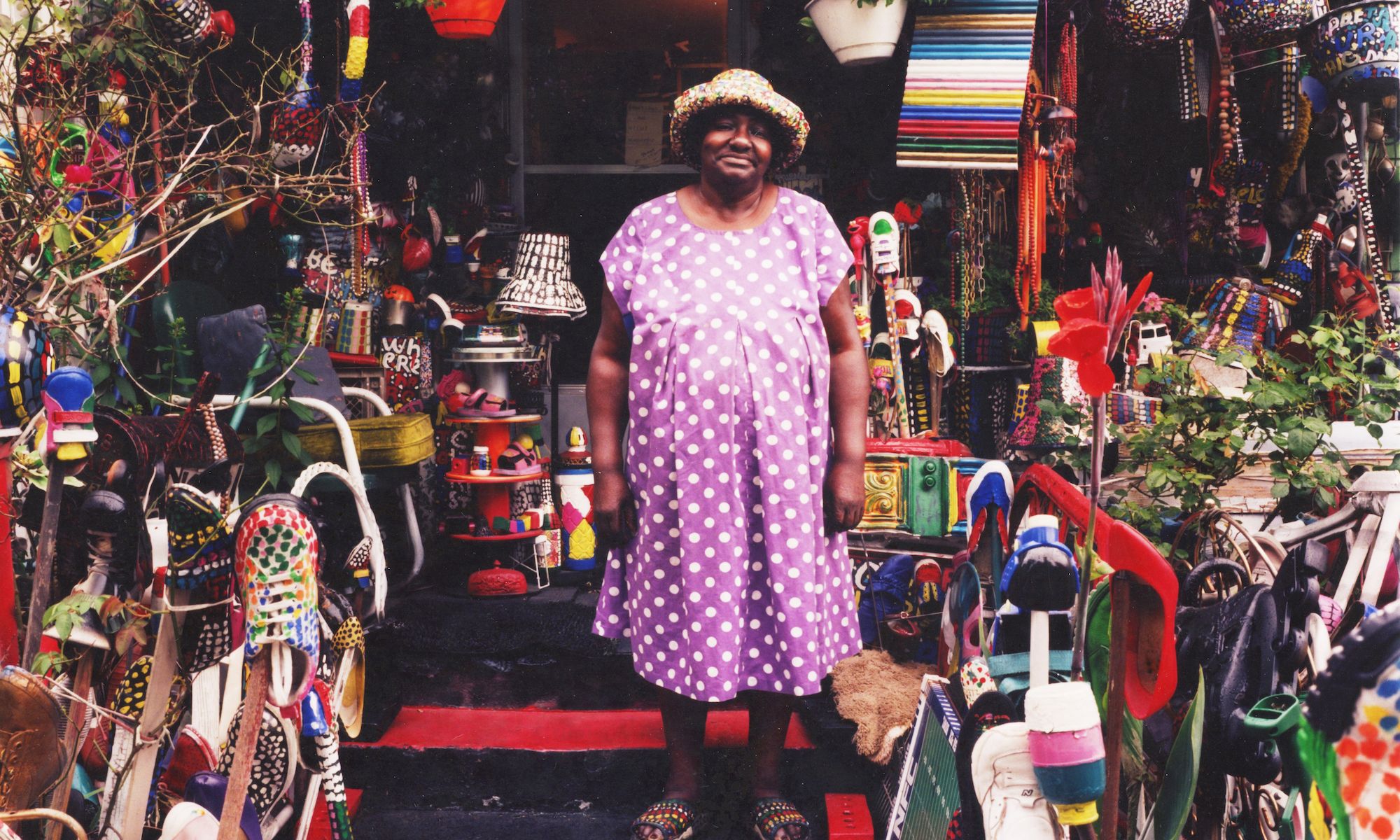The late artist L.V. Hull on the front steps to her home in Kosciusko, Mississippi Photo: Bruce West
The late artist L.V. Hull’s home-studio in Mississippi has been added to the US’s National Register of Historic Places—a first for an art environment created by an African American, and the first time a Black female visual artist’s home-studio has been recognised as nationally significant (rather than just significant to its home state).
After Hull bought her house in 1974 in Kosciusko, she transformed it with whatever she could find—from discarded hubcaps she adorned with polka dots to shoes she arrayed on poles like strange flowers among the real blooms of her garden. Messages on handmade signs, such as “Take Time to Appreciate”, were embedded into the colourful collage of objects that accumulated both inside and outside her home.
Yaphet Smith, whose grandmother lived nearby, visited Hull’s house for years before the artist’s death in 2008, which left the unique site with an uncertain future. In 2021, Smith purchased the long-unoccupied building; it is now stewarded through his non-profit, the Keysmith Foundation. The home’s addition to the National Register is the latest step in ensuring its survival as part of a planned L.V. Hull Legacy Center, scheduled to open in 2025 as the county’s first visual arts facility.
“It’s important to have an accurate story of creativity in America, and including her home on the National Register helps achieve that goal,” says Smith, who is also working on a documentary film about Hull. “Hopefully, it will be a catalyst for preserving the spaces and stories of other African American artists, and particularly women.”
The Legacy Center makes special note of the historic firsts in the case of Hull’s home-studio with regards to its listing on the National Register.
“It speaks to the ways that preservation and designation have been practised in the past—favouring architectural icons; the work of predominantly white or male architects, artists and designers; and the histories and achievements of men—even when it’s abundantly clear that women, people of colour and Indigenous peoples were present at and integral to the history of those places,” says Chris Morris, a senior director of preservation programmes at the National Trust for Historic Preservation, which included Hull’s home on its 2023 list of most endangered historic places in the US. “Those practices are being directly challenged and changed with designations like L.V. Hull’s home.”
Not only does a National Register listing open more funding opportunities for the site, which are needed for the Legacy Center’s planned opening next year, but it also represents a shift in approaching preservation for self-taught and folk-art environments.
“There was a long history of pickers coming in, taking work from artists in the South to New York, selling it in galleries and putting it in other institutions and private collections,” says Annalise Flynn, an independent curator involved in advocating for the site. “The fact that this is going to remain a cultural asset within the state of Mississippi is really exciting, and I hope more people start to invest in things like this within other small communities.”
Flynn, who manages the Kohler Foundation’s Spaces Archive, connected Smith with the philanthropic organisation, which in 2022 conserved about 850 pieces of Hull's art that had been stored in the local city hall’s basement. The Kohler Foundation then donated the works to the Arts Foundation of Kosciusko. Although none of Hull’s art is currently installed on the house itself, there are plans to show it as part of the Legacy Center, and an exhibition of her work will open next year at the Mississippi Museum of Art.
“The imprint of her imagination is still there,” Smith says of the house. “There are faded spots on the wall where she hung her art, as well as the nails all over the home. If you've seen pictures, the home was swarming with her work. And it's really a way to commune with her, the way that people would when they came to visit.”

